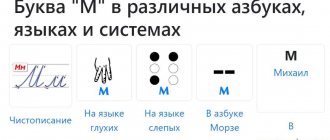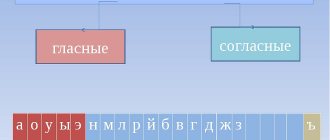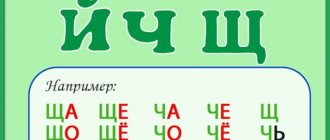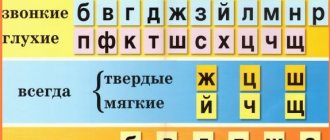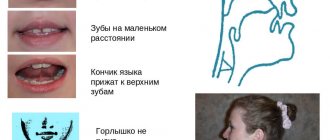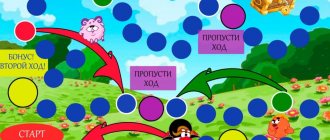Development of phonemic processes
L: Now let's play the game "Recognize the sound." There are different objects in front of you: a spoon, a glass, paper. Now I will show you how sound is produced by each object, and you remember this. The speech therapist taps the glass with a spoon, then rustles the paper. - Now close your eyes, I will make sounds, and then you will show me what object I used to make this sound. The speech therapist knocks a spoon on a glass and rustles paper. Plays sounds again so that the child remembers them. R: closes his eyes and then recognizes sounds; if there are mistakes or difficulties, the speech therapist helps.
What part of speech is C?
S is also a word. And all words belong to a certain part of speech.
S, as a word, belongs to the auxiliary part of speech. This is a preposition that takes the form - with - if the word following it begins with - with / z-: with the tablecloth, with the stars.
C is not used with all words, but only with nouns, adjectives and numerals:
- with latitude and height;
- with excellent intentions;
- with three classmates.
Never used with verbs, adverbs, gerunds, participles, or auxiliary parts of speech.
The word C, as a preposition, is used with the independent parts of speech indicated above, only in indirect cases.
The preposition C is a non-derivative preposition, simple, which turns into the preposition “so” before the consonants l, m, p, s, z, etc.
- with many;
- from day to day;
- from the forehead;
- with mother-in-law;
- with zeal, etc.
Sonorant, noisy, hissing and whistling consonants
In the Russian language, sonorant, noisy, as well as hissing and whistling consonant sounds are also distinguished. We will give a definition of each of the named types of consonants, and also list which consonants belong to one or another type.
Sonorant consonants
Sonorant consonants are voiced unpaired consonants.
There are 9 sonorant sounds in total: [th'], [l], [l'], [m], [m'], [n], [n'], [r], [r'].
Noisy consonants
Noisy consonant sounds are divided into voiced and voiceless. Voiceless noisy consonants include 16 sounds: [k], [k'], [p], [p'], [s], [s'], [t], [t'], [f], [f '], [x], [x'], [ts], [ch'], [sh], [sh'], and noisy voiced consonants include 11 sounds: [b], [b'], [ c], [v'], [g], [g'], [d], [d'], [g], [h], [h'].
Hissing consonants
There are a total of 4 hissing consonant sounds in the Russian language: [zh], [ch'], [sh], [sch']. They all resemble hissing to the ear, which is why they are called hissing consonants.
Sibilant consonants
Whistling consonants
Whistling consonants
Whistling consonant sounds [з] [з'] [с] [с'] [ц] are, in their pronunciation, front-lingual, fricative. When articulating hard sounds [z], [s] and [ts], the teeth are exposed, the tip of the tongue leans against the lower teeth, and the back of the tongue is slightly arched, the lateral edges of the tongue are pressed against the upper molars. The air passes through, creating frictional noise.
When articulating soft sounds [s'] and [z`], the same thing happens, but the back of the tongue rises to the hard palate.
When pronouncing voiced sounds [з] and [з`], the vocal cords are closed and vibrate, but the velum palatine is raised. Other articles on the topic Russian language
Use of the preposition "with"
1. The preposition C is used to indicate the object of directed action:
- Play with children;
- call Moscow.
2. To indicate the location of an action or phenomenon:
- sail from another part of the world;
- return from work.
3. Indicating that someone has something;
- grandfather with a mustache;
- bag of wheat;
- card with wishes.
4. Indication of the state of the object:
- you've had enough;
- the neighbor is bad.
5. Indication of the place of origin of the object:
- shoe from the left foot;
- carpenter from the factory.
6. Indication of the object of joint action:
- cat and dog;
- children with grandmother.
7. Indication of the causal relationship, the source of origin of the condition or action:
- die laughing;
- pale with fright.
8. Indicating the purpose of performing the action:
- file a claim;
- write with a request.
9. Indication of the measure when it can be replaced with another preposition “about”:
- run about a kilometer;
- been sick for a month.
10. Indication of the duration and time of the action:
- wake up at dawn;
- travel from the end of May;
- friends since childhood.
Development of visual perception and fine motor skills
L: Let's play a game called "Which picture is missing?" — There are pictures in front of you: Snowman, Sledge, Elephant, Table. - Remember these pictures. When you remember them, “night” will begin and you will close your eyes. - When I say “day”, you will have to open your eyes and say which of the pictures is gone. - “Night” (The speech therapist removes the picture with the snowman). - "Day". Open your eyes. -What picture is missing? - The snowman is missing! (The speech therapist puts the picture of the snowman with the other pictures) - Try to remember all the pictures again: Snowman, Sleigh, Elephant, Table - “Night” (The speech therapist removes the picture with the elephant). - "Day". What picture is missing? - Right! (The speech therapist puts a picture of an elephant with the other pictures). R: Answers, completes the task, if he makes a mistake, the speech therapist helps.
Pronunciation C
C sounds dull and whistling. This is a consonant sound that has both hard and soft pronunciation.
Softly pronounced [s`] (before e, e, i, b, yu and i).
Some voiced consonants also voice the S in front of them with [z]: rake - [zg]rest, double - [zg]voit, etc.
The hissing ones also influence the S in front, duplicating themselves instead of the S: sew - [shsh]it, burn - [burn]etc, etc.
Before “ch” and “tch” S is pronounced like Ш: count - [shield], happiness - [h]aste, etc.
Development of articulatory motor skills
L: Let's work on our tongue. Once upon a time there lived a kind and cheerful tongue. Let's say hello to the tongue. Show me your tongue. First long, and then short. Now move it quickly (demonstration: open your mouth, extend your tongue and move up, down, left, right). We decided to play football with him; to score a goal, you need to drive the ball into the goal.
Pull your lips forward with a tube and blow on the ball until the child pushes it between the cubes. After football, Tongue got hungry and decided to make pancakes. For pancakes we will knead the dough. Smile. Open your mouth slightly. Slap your tongue between your lips - “pa- pa- pa- pa- pa...”. Hold in a calm position while counting from 1 to 5. Now let’s make pancakes. Smile and open your mouth slightly.
Place your wide tongue on your lower lip (hold for a count of 5 to 10 seconds). The pancake turned out to be hot, let's blow: ssss!!!! We ate pancakes, now let’s brush our teeth (smile, show your teeth, and alternately “brush” the lower and upper teeth with the tip of your tongue). R: Performs the exercise, we monitor the static coordination of movements.
Development of visuospatial orientation
L: Now let’s go to the table (they get up and go to another table that was prepared in advance). Look at our table. There are various objects on it. There is a bowl to your right, take it and give it to me. R: At first he reaches out to the elephant, but then he takes the bowl and gives it to the speech therapist L: That's right! There is an elephant (toy) to your left, take it and give it to me. R: takes the elephant and gives it to the speech therapist. L: Right! (removes the elephant and the bowl, takes out toy boots and socks). Take the object that lies closer to you and give it to me (the boots are closer). And then take the object that is further from you (further are the socks) R: Takes the socks and gives them to the speech therapist. Afterwards he corrects himself and takes the boots, and then takes the socks and also gives them to the speech therapist. L: Well done!!
